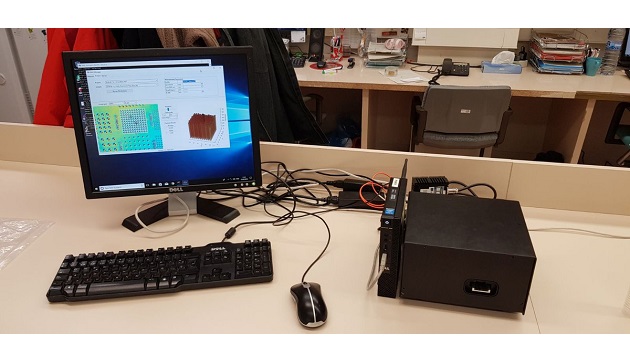European scientists have developed a new sepsis detector that uses photonics to produce a while-you-wait diagnosis, from sample to result, in less than thirty minutes.
Programmed to detect proteins and E.coli, one of the deadly bacteria that can cause the human body to go into septic shock, the detector then uses light to look for specific biomarkers (the tell-tale signs or an indicator of a disease) that are as small as few nanometres in size, or 1 / 1,000,000th of the thickness of a single human hair.
Pre-clinical trials have already begun at the Vall d’Hebron University Hospital where the device has been in operation since 2018. Clinical trials are expected to take place at the end of 2019.
The rapid ‘microarray’ detector looks at a small blood sample taken from a thumb or forefinger. The patient’s blood sample is then separated in a centrifuge so that a clinician can examine the plasma, the part of the blood sample where all the proteins are contained.
Current techniques for detecting sepsis, a condition that kills more than 20,000 people per day worldwide, can take hours or even days to produce the results and diagnosis. While bacteria need to reproduce in large quantities before an accurate determination can be made, a patient can often be waiting more than one day before a course of treatment can be determined. If caught early enough, sufferers can be treated for sepsis with simple antibiotics.
Sepsis can be fatal, (affecting more than 30 million people worldwide, potentially claiming the lives of 6 million people every year), but can also leave sufferers with life-changing conditions like organ failure or the loss of an arm or leg.
Project coordinator, Roland Terborg explains:
“The optical readout of the sample can be completed in one minute, allowing us to deliver results in thirty minutes from start to finish. This is much faster than methods currently in use. With a condition like Sepsis, where time is crucial this device looks set to prevent thousands of deaths every year that could easily have been avoided”.
Photonic Sepsis Detection
The sepsis detector uses photonic technology to make a clear and accurate diagnosis. The plasma sample flows over a microarray, a collection of tiny spots containing specific antibodies on a nanostructured gold slide.
Two light beams are then shone through the full microarray, with one of them passing through the sample, while the other one goes through the clear part of the slide, acting as a ‘reference’.
The beams passing through the biomarker and the clear regions on the slide are then checked for any changes in intensity.
“Depending on the amount and type of biomarker attached to each antibody, we obtain a unique image: a signature pattern if you like. The image patterns tell us what is present in the plasma sample, which we then record with a CMOS sensor, the same technology used in a digital camera that converts light into electrons,” said Terborg.
The device could also be extended to perform on other types of disease screening or multiple simultaneous diagnoses, especially those requiring a rapid detection of large numbers of biochemical targets (more than 1 million) on a single microarray.
For more information, visit: www.photonics21.org






